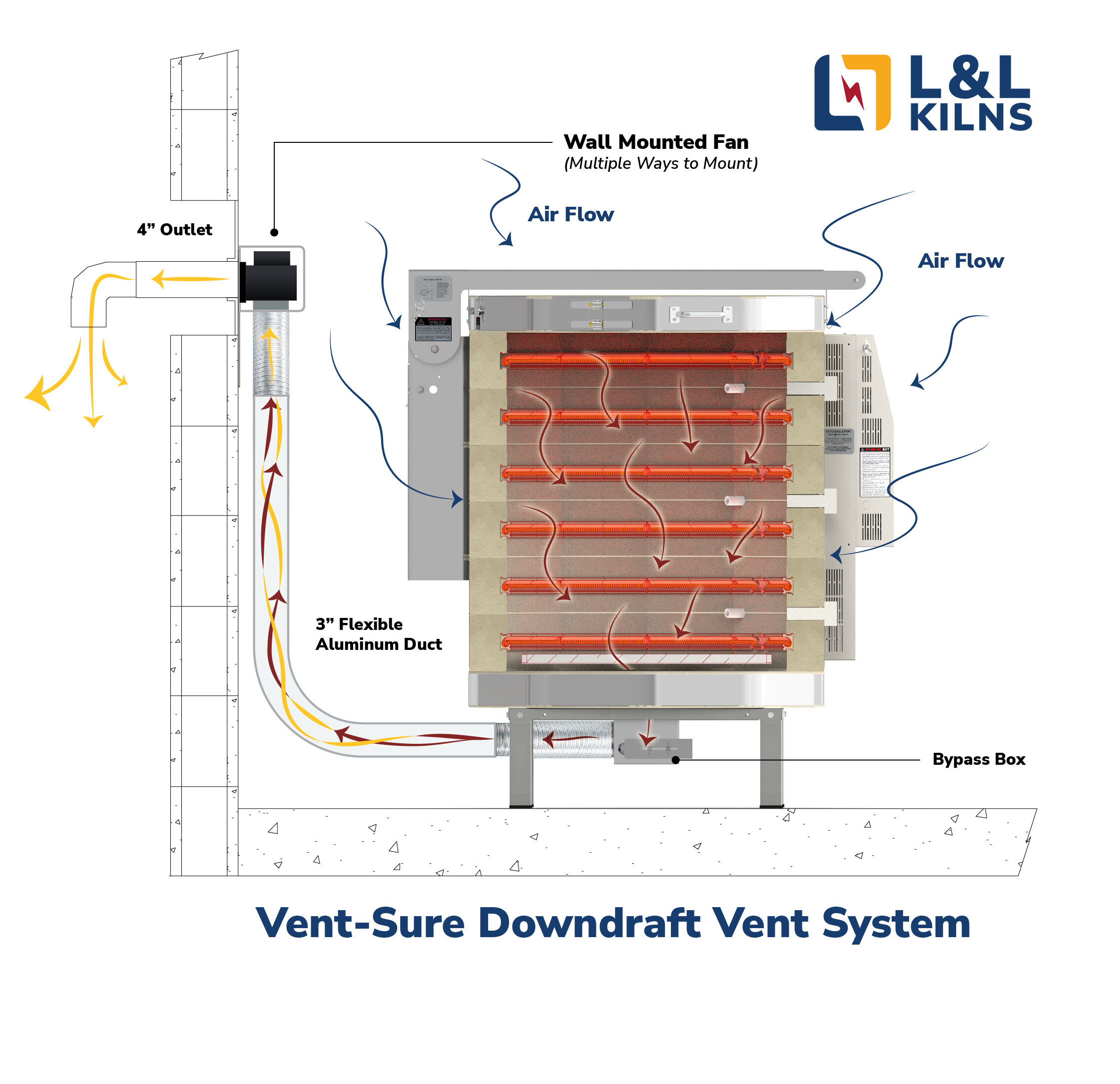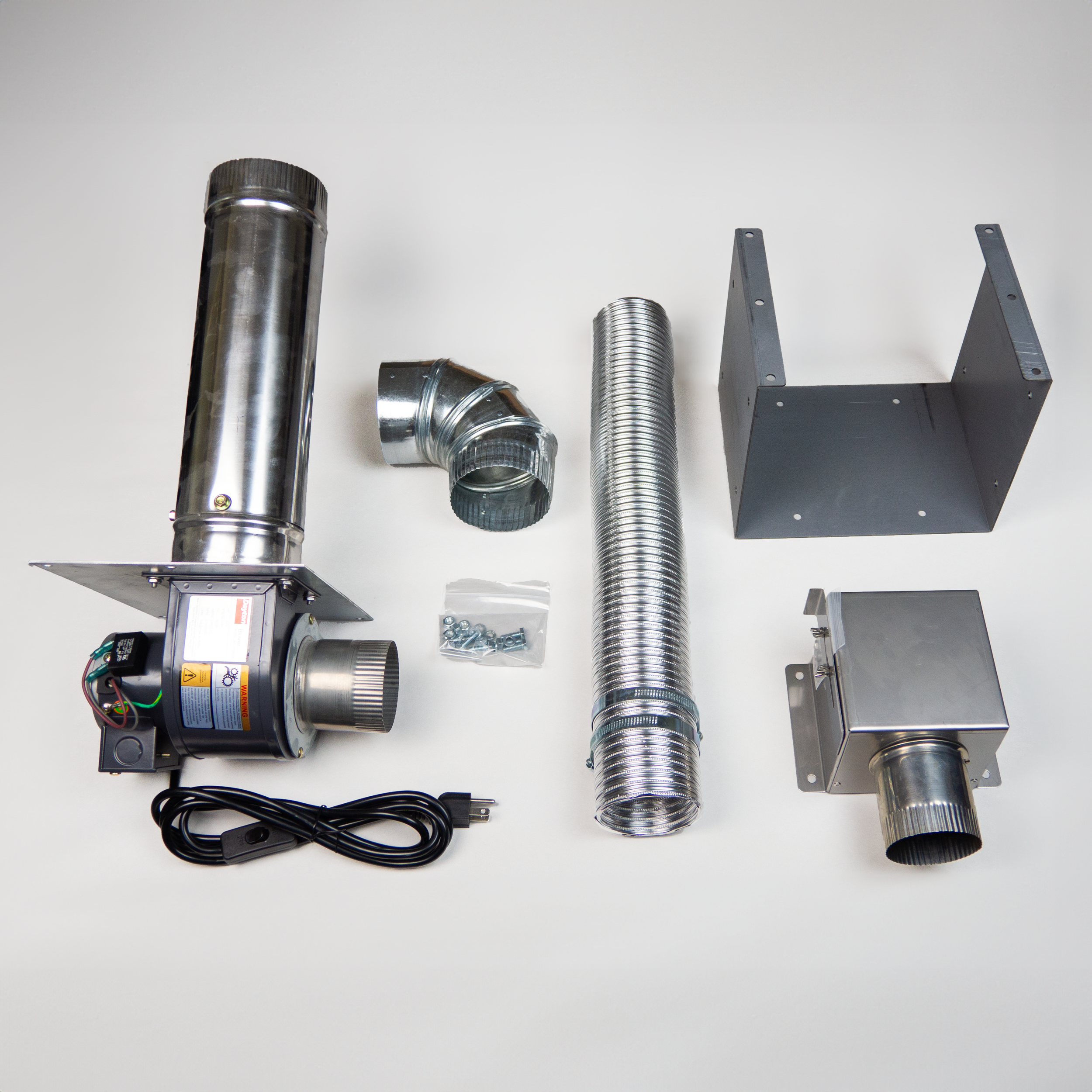Calculate how many CFM of air ventilation you need
- Find the BTUs per hour (BTU/Hour) your kiln produces. Check the BTU chart on the General Dimension Drawing for your kiln model.
- You can download the General Dimension Drawing from the web page of any kiln model. Look for these buttons. (See item #4 below for Easy-Load kilns).

- You will find a chart like this on the drawing:

- For Easy-Load kilns use the chart found in this PDF.
- Use the BTU/Hour number for the highest firing temperature. You can extrapolate these numbers. For instance, you can pick a BTU/Hour number between the column for 2232°F and 2350°F for Cone 8 firing.
- Keep the room temperature at 120°F or below. Determine the typical highest outside temperature.
- Calculate the temperature difference (Delta T) between the room and outside temperatures.
- Use this formula: BTU/Hour / (1.085 x Delta T) = CFM (cubic feet per minute).
An Example
For an e23T-3 kiln firing at Cone 6: 16,104 BTU/Hour.
- Delta T: 120°F - 100°F = 20°F.
- Ventilation needed: 16,104 / (1.085 x 20) = 742 CFM.
- Ensure sufficient makeup air enters the room to prevent high static pressure, which reduces fan efficiency. This will keep the static pressure to a minimum. An increase in static pressure will downrate the rated CFM of a given fan.
Sizing an HVAC System
- You can use the same BTU information to size your HVAC system
- One ton of cooling capacity equates to 12,000 BTUh.





